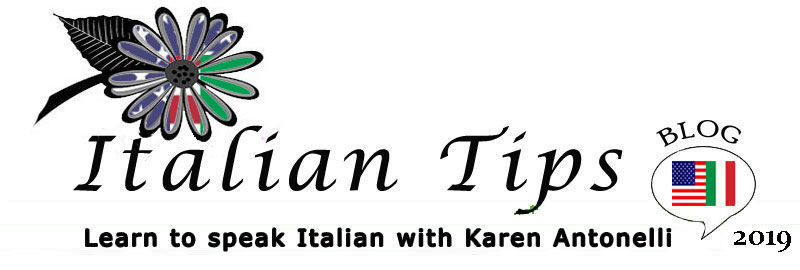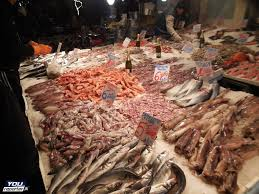|
|
|
|
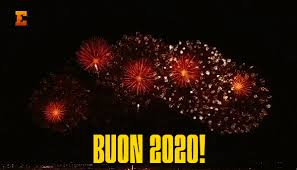

I found this lovely wish for the New Year: “I hope that your life flows
calmly, but not too much so you get bored; that it has the right emotions
but not too much to make you suffer; that it has the right amout of
suffering to make you grow but not too much to destroy you; and that
there is all the love possible, which can never be too much.”
Saturday, December 28, 201
|
|
Ho trovato questo bellissimo augurio natalizio e vorrei condividerlo: “Vi
auguro che questa stella di Natale resti accesa ogni giorno, tutti i giorni
dell’anno. Che possa illuminare e guidare i vostri passi nei giorni più bui,
e che quella luce speciale che fa brillare i vostri cuori non si spenga mai.”
|
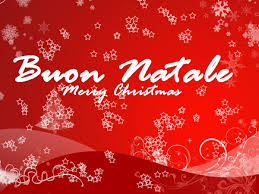
I found this lovely Christmas wish and I would like to share it with you:
“I wish that this Christmas star remain lit every day, every day of the
year. That it may light and guide your steps in the darkest days; and
that the special light that shines in your heart may never go out.”
Saturday, December 21, 2019
|
|
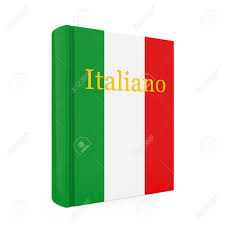 Vi s DIZIONARIO O VOCABOLARIO? Vi s DIZIONARIO O VOCABOLARIO?
Vi siete mai posti questa domanda? Nel linguaggio comune i termini
“vocabolario” e “dizionario” sono interscambiabili, ma in realtà non
sono propriamente dei sinonimi, ed un’analisi più attenta porta a
notare delle differenze che possono chiarirne meglio anche l’uso
nei diversi contesti.
Sul modello delle coppie francese dictionnaire/vocabulaire e inglese
dictionary/vocabulary, nell'italiano di fine Novecento si è affermata
una distinzione tra vocabolario inteso come “insieme di vocaboli
propri di una lingua, di un dialetto, di una varietà settoriale o anche
di un individuo” (il vocabolario italiano, il vocabolario medico, il
vocabolario dannunziano) e dizionario inteso come “opera
lessicografica” (il dizionario italiano-inglese, il dizionario dei sinonimi
e contrari, il dizionario dei proverbi, il dizionario etimologico…).
Quindi, come conferma anche l’Accademia della Crusca, un
“dizionario è più esteso di un vocabolario in quanto si può riferire
a trattazioni disposte in ordine alfabetico, ma non propriamente
lessicali”.
Ma mentre nell’accezione di dizionario non può assolutamente
essere utilizzato il termine vocabolario, è tuttavia possibile il
contrario, anche perché sempre più spesso nei vocabolari sono
presenti locuzioni che sarebbero proprie di un dizionario. Ecco
perché i due termini vengono solitamente utilizzati come sinonimi
nel linguaggio comune e anche noti vocabolari della lingua italiana
si definiscono nei loro titoli “Dizionario della Lingua Italiana” (ad
esempio, De Mauro, Devoto-Oli, Garzanti).
Rimangono invece fedeli alla definizione di vocabolario la Treccani
e la Zanichelli col suo Zingarelli.
http://makalanguageconsulting.blogspot.com/2015/12/che-
differenza-ce-tra-vocabolario-e.html
I found the above entry on line at
http://makalanguageconsulting.blogspot.com
/2015/12/
che-differenza-ce-tra-vocabolario-e.html
It refers to an article written for the Accademia della Crusca
website on June 19, 2009, by Luca Serianni in which the author
addresses the difference between “vocabolario” and “dizionario”.
Here is my translation of the most important parts of Professor
Serianni’s article: In a lucky little volume entitled What is a
“vocabolario” (Florence, Le Monnier Publishers, 1961), Bruno
Migliorini, the great linguis t, address this question in his opening
statements to the book…There used to be a distinction between
vocabolario, a collection of words and dizionario a collection of
words and locutions (someone may have even proffered the
opposite). A dictionary is more extensive in that it can refer to
treatments in alphabetical order but nor properly lexical, we can say
Biographical Dictionary but not a Biographical vocabolario. Basing
itself on the French and English models, in Italy at the end of the
20th century a distinction between dizionario as a lexicographic
work and vocabolario as a complex of words and locutions belonging
to a language, a dialect belonging to an area or even to an individual:
medical vocabolario, the exuberance of the vocabolario of Gabriele
D’Annunzio,…In the titles of the great lexicographic works of
contemporary Italian the term dizionario dominates, except for the
stalwarts still use vocabolario.
Saturday, December 17, 2019
|
|
Ma dai… 
È una di quelle espressioni usate spesso, ma continua a confondere gli
studenti. Vediamo cosa può significare:
Approvazione:
Cristina: “Ho finalmente finito la tesi.”
Giuseppe: “Ma dai…complimenti!”
Incoraggiamento:
“Ma dai, assaggia questi tartufi bianchi, vedrai che ti piaceranno; ma stai
attenta se ti piacciono troppo ti potrai ridurre sul lastrico.”
Fastidio:
“Ma dai, smettila di gironzolarmi intorno!”
Sorpresa:
Susanna: “Ho smesso di fumare.”
Caterina: “Ma dai!”
Irritazione:
“Ma dai Giorgio, ti ho capito la prima volta, basta così, non devi continuare
a ripetere le stesse cose!”
Esasperazione:
“Ma dai…come fai a non capire, te l’ho spiegato almeno dieci volte!”
Incredulità:
Elena: “Ieri ho vinto la lotteria, e domani mi comprerò quella Ferrari che
ho sempre desiderato.”
Teresa: “Ma dai?”
E allora, come si traduce 
So, how do we translate it?
It is one of those expressions that is used all the time but continues
to confuse students. Let’s take a look at what it can mean:
Approval:
Cristina: “I finally finished by thesis.”
Giuseppe: “Wow…congratulations!”
Encouragement:
“Come on, taste these white truffles, you’ll see you’ll like them; but be
careful, if you like them too much you’ll break the bank.”
Annoyance:
“Come on, stop hanging around me!”
Surprise:
Susanna: “I quit smoking.”
Catherine: “Come on, I’ll be…”
Irritation:
“Okay George, I understood you the first time, that’s enough, you don’t
have to repeat the same things over again.”
Exasperation:
“Come on, how is it you don’t understand, I explained it at least ten
times.”
Incredulity:
Christine: “Yesterday I won the lottery, and tomorrow I will buy that
Ferrari that I always wanted.”
Teresa: “Oh really?”
Saturday, December 7, 2019
|
|
Il Giorno del ringraziamento, o più semplicemente "il Ringraziamento", è
una festa di origine cristiana osservata negli Stati Uniti d'America (il
quarto giovedì di novembre) e in Canada (il secondo lunedì di ottobre) in segno di gratitudine per il raccolto e per altre benedizioni ricevute
durante l'anno trascorso.
Il “primo Thanksgiving” fu celebrato dai Pellegrini nell’ottobre del 1621
dopo il primo raccolto. La festa durò per tre giorni, se secondo uno dei
partecipanti, Edward Winslow, ci furono 90 Nativi Americani e 53
Pellegrini
Anche se non si celebra in Italia, possiamo trovare qualcosa o qualcuno di cui essere grati, perciò vi auguro un Felice Giorno di Ringraziamento!

Thanksgiving Day or just plain Thanksgiving is a feast day with Christian
roots which is celebrated in the United State the fourth Thursday in
November and in Canada the second Monday in October as a sign of
thanks for the harvest and other blessings received during the past year.
The “first Thanksgiving” was celebrated by the Pilgrims in October of
1621 after the first harvest. The celebration lasted three days, and
according to Edward Winslow, one of the participants, there were 90
Native Americans and 53 Pilgrims present.
Even if it isn’t celebrated in Italy, we can find something or someone to be grateful for, thus I wish you a Happy Thanksgiving!
Saturday, November 23, 2019
|
|

MAGARI: una parola usata comunemente in italiano, ma non si
traduce facilmente.
Allora, cosa significa?
Magari è usata per esprimere:
1. Un desiderio: Hai comprato quell’appartamento che volevi?
Magari! C’era uno più ricco di me.
2. Sì per favore/grazie: Caterina ed io andiamo fuori a cena questa
sera,
prenoto un tavolo per tre?
Magari!
3. Se: Magari avessi studiato italiano invece di coreano, oggi sarei a
Firenze. Magari fossi ricca!
4. Forse: Magari invitiamo Lorenzo e Lisa a pranzo.
5. Piuttosto: Magari butto tutto nell’immondizia, ma loro non
avranno mai un soldo.
MAGARI: a word that is commonly used but just doesn’t translate
easily.
So, what does it mean?
Magari is used to express:
1. A desire: Did you buy the apartment you wanted?
I wish! There was someone richer than I.
2. Yes please/thank you: Caterina and I are going out for dinner this
evening,should I reserve a table for three?
Yes please.
3. If only: If only I had studied Italian instead of Korean, today I would
be in Florence.
If only I were rich!
4. Maybe/perhaps: Maybe we’ll invite Lorenzo and Lisa to dinner.
Instead/rather: I’d rather throw everything in the garbage, but they
won’t ever get a penny.
Saturday, November 16, 2019
|
|
SNACK, MERENDA, SPUNTINO?
C’è una differenza tra spuntino e merenda? In inglese c’è solo una parola
“snack” ma in italiano la risposta alla domanda è: Sì!
Uno spuntino è un pasto rapido e leggero, uno snack, che si fa tra i pasti
principali o a qualsiasi ora del giorno o della notte quando si ha fame. Per
esempio: Questa sera ceniamo tardi, a pranzo ho mangiato poco, ho
bisogno di uno spuntino o non arrivo alla cena.
La merenda può anche essere uno spuntino, ma di solito si fa tra il pranzo
e la cena, soprattutto da parte di ragazzi quando tornano dalla scuola. La
merenda si fa anche a metà mattina, specialmente da parte di scolari, i
bambini dell’asilo e delle scuole elementari. Questi sono di solito cibi non
cucinati, freddi che si possono mangiare con le mani.
Esiste anche la parola “merendina” che indica uno snack già confezionato
il quale è sia spuntino sia merenda.
Buon appetito, ma non mangiate troppo, ho preparato qualcosa di
speciale per la cena questa sera!
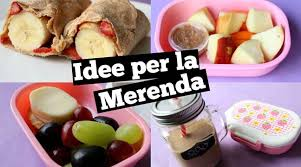
Is there a difference between the terms “spuntino” and “merenda”? In
English there is only one word “snack” but in Italian the answer to the
question is Yes!
“Spuntino” is a quick light meal consumed between main meals or at any
time of day or night when one is hungry. For example: This evening we
are eating late, at lunch I didn’t eat much, I need a “spuntino” or I won’t
make it to supper.
“Merenda” may also be considered a “spuntino” but it is usually eaten
between lunch and dinner, usually by children when they get home from
school. “Merenda” may also be eaten mid-morning, usually by
kindergarteners or elementary school children. These foods are not
cooked and served cold or at room temperature and can be eaten with
your hands.
There is also the term “merendina” (little merenda) which is a
prepackaged snack which may be eaten either as a “spuntino” or a
“merenda”.
Buon appetito, but don’t eat too much, I prepared something special for
dinner this evening!
Saturday, November 9, 2019
|
|
| |
HALLOWEEN È CALABRESE!? 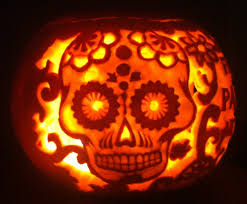
Secondo quest’articolo che ho trovato sul giornale online, Calabria News:
Halloween è una tradizione calabrese.
“Ebbene sì la tesi è di Luigi Maria Lombardi Satriani, antropologo
calabrese e professore all’università Sapienza di Roma che ha descritto
l’usanza tipica di Serra San Bruno del “Coccalu di muortu” che si traduce
in “teschio di morto” in dialetto delle serre vibonesi. L’usanza di svuotare
una zucca, ricavarne tratti di un viso umano e porvi dentro una candela
risalirebbe quindi alla migrazione delle popolazioni meridionali in America
che avrebbero portato con loro e continuato a praticare una tradizione
dal significato antropologico ben preciso, ovvero stabilire un contatto con
i propri cari defunti. I bambini in giro per il paese con la zucca, chiedono
un’offerta con la frase tipica: “Mi lu pagati lu coccalu?” (Mi pagate il
teschio di morto?). La ricompensa è quasi sempre una piccola somma di
denaro che alla fine del giro i bambini dividono tra di loro per andare a
comprare qualche leccornia.”
According to this article I found on the online newspaper Calabria News:
Halloween is a tradition from the Italian region of Calabria.
And yes, this premise belongs to Luigi Maria Lombardi Satriani, Calabrese
anthropologist and professor at the University La Sapienza in Rome, who
described the typical tradition in Serra San Bruno of “Coccalu di muortu”
which translates into “skull of the dead” from the dialect of the mountains
near Avellino. The tradition to empty a pumpkin, draw a human face on it
and place a candle inside is traceable to the migration of individuals from
the southern part of Italy to America. They brought this tradition—which
has a specific anthropological meaning—with them and continued to
practice it; they wanted to establish contact with their dearly departed.
Children walk around town with a pumpkin, asking for an offering using
the sentence: “Mi lu pagati lu coccalu?” (In dialect this means, will you
pay for a skull?) The reward is almost always a small sum of money
which at the end of the day the children divide among
themselves to go and purchase some delicacies.
Saturday, November 2, 2019
|
|
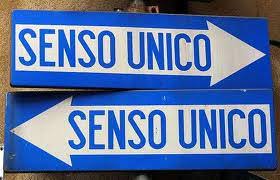
Si dice avere senso o fare senso?
Una trappola linguistica è tradurre direttamente da una lingua all’altra.
Questo problema si presenta quando pensiamo all’inglese: “it makes
sense” e lo traduciamo letteralmente in italiano come “fa senso”.
Questo però è un errore. Fa senso significa che una cosa produce
simile alla ripugnanza o al disgusto; una specie di turbamento fisico o
psichico.
Per esempio: I serpenti mi fanno senso.
Le immagini di brutalità che si vedono in alcuni film oggigiorno fanno
senso. Avere senso significa che una situazione o un’idea ha un
contenuto logico, valido, giustificabile.
Per esempio: La spiegazione della professoressa ha senso, finalmente
capisco i verbi riflessivi.
Gina, non ha senso svegliarti alle 4, l’autobus turistico arriva alle 10,
cosa farai per quelle 6 ore?
How do we translate “it makes sense” into Italian? If we fall into the
trap of a literal translation we would say “fa senso”. This however is a
mistake. Fa senso means that something produces a strong and
unpleasant impression, similar to repugnance or disgust, a type of
physical or psychic turmoil.
For example: Snakes disgust me.
The images of brutality that are shown in some films these days are
repugnant.
Avere senso means that a situation or an idea has a logical, valid,
justifiable content.
For example: The explanation the professor gave makes sense, I
finally understand reflexive verbs.
Gina, it makes no sense to wake up at 4, the tour bus arrives at 10,
what are you going to do for those 6 hours?
Saturday, October 26, 2019
|
|
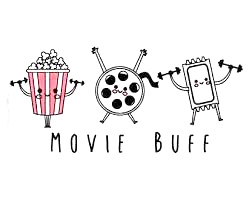
Che divertimento trovare una parola che ha tanti significati in entrambe
le lingue! Pensiamo alla parola “BUFF” in inglese, come si traducono i
suoi molti usi? Sostantivi:
1. Il colore giallo scuro; il colore di camoscio
2. Pelle scamosciata, panno scamosciato
3. Pelle di camoscio
4. Disco che pulisce il camoscio
5. Pelle nuda
6. Entusiasta, fanatico, appassionato
7. Genio, esperto
Aggettivi:
1. Giallo scuro, marrone chiaro
2. Di camoscio, scamosciato
3. Muscoloso, atletico, robusto
4. Bello, attraente
5. Lucido, lucidato
Verbi transitivi:
1. Lucidare, brillantare il metallo
2. Lucidarsi le scarpe
3. Scamosciare
What fun it is to find a word that has so many meanings in both
languages. Let’s look at the word “BUFF” in English, how can we
translate its many uses?
Nouns:
1. Dark yellow, the color of suede
2. Suede or chamois cloth
3. Suede
4. A disc that cleans suede
5. Naked skin—in the buff
6. Enthusiast, fanatic: movie buff, history buff for example
7. Genius or expert: she’s a computer buff
Adjectives:
1. Dark yellow or light brown
2. Of chamois or suede
3. Muscular, athletic, in shape
4. Handsome, attractive
5. Shiny, polished
Transitive verbs:
1. To polish metal
2. To shine shoes
To buff leather
Saturday, October 19, 2019
|
|
SI AUGURA “BUON FINE SETTIMANA” O “BUONA FINE SETTIMANA”?
Quest’espressione è attestata in italiano dal 1932.
Per rispondere cito dal sito dell’Accademia della Crusca: <<Quanto a la
fine settimana o il fine settimana anch’esso ambigenere, l’uso sembra
decisamente inclinare verso il genere maschile, forse per l’attrazione
esercitata da il (lo) week end da cui deriva, col genere femminile si
tende per lo più ad usare la fine della settimana.>>
Il modo più semplice è di augurare un buon

DO YOU WISH SOMEONE “BUON FINE SETTIMANA” OR “BUONA FINE
SETTIMANA” (in other words is it masculine or feminine)?
This expression is documented in Italian from 1932.
To answer I quote from the website of the Accademia della Crusca
(Italy’s ultimate grammar authority): “In regard to la fine settimana or
il fine settimana being also common-gender, the use tends decisively
towards the masculine. Perhaps due to the attraction of the English
term weekend from which it derives. The feminine is more commonly
used for the end of the week (la fine della settimana).”
Saturday, October 12, 2019
|
|
GLI AGGETTIVI INTERROGATIVI ED ESCLAMATIVI:
Parte II
GLI AGGETTIVI ESCLAMATIVI

Gli aggettivi interrogativi e gli aggettivi esclamativi sono
gli stessi: che, quale, quanto.
che, è invariabile e ha lo stesso significato di quale;
quale, varia nel numero ma non nel genere (quale/quali);
quanto, variabile sia nel numero che nel genere (quanto/
quanta/quanti/quante).
Gli aggettivi esclamativi si trovano in frasi che
terminano con un punto esclamativo.
Che macchina magnifica hai comprato!
Mamma mia, quale ristorante avete scelto, costa un
occhio della testa!
Michele, quanto vino hai bevuto! Domani soffrirai di mal
di testa.
INTERROGATIVE AND EXCLAMATORY ADJECTIVES:
Part II
EXCLAMATORY ADJECTIVES
Interrogative and exclamatory adjectives are the same in
Italian and they are: che (what/which), quale (what/which),
quanto (how much).
che, is invariable and has the same meaning as quale;
quale, varies by number but not by gender (quale/quali);
quanto, varies by number and by gender (quanto/quanta/
quanti/quante).
Exclamatory adjectives are found in sentences that end with an
exclamation point.
Saturday, October 4, 2019
|
|
AGGETTIVI ESCLAMATIVI:
Parte I
GLI AGGETTIVI INTERROGATIVI
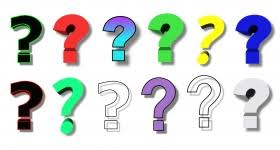
Gli aggettivi interrogativi e gli aggettivi esclamativi sono gli stessi: che,
quale, quanto.
·che, è invariabile e ha lo stesso significato di quale;
·quale, varia nel numero ma non nel genere (quale/quali);
·quanto, variabile sia nel numero che nel genere (quanto/quanta/
quanti/quante).
Gli aggettivi interrogativi sono usati per introdurre una domanda, sia
in modo diretto, sia in quello indiretto. Domande dirette in forma
scritta terminano con il punto interrogativo, mentre quelle orali sono
espresse con un cambiamento di tono di voce. Le domande indirette
sono richieste sotto forma d’affermazione, usate spesso per essere
più cortesi.
Esempi di domande dirette:
Che macchina hai intenzione di comprare?
Quale ristorante è il tuo preferito? Quali piatti sono i migliori?
Al ristorante, quanto vino avete bevuto, quanti piatti avete ordinato,
quanta pasta avete mangiato, quante tazze di caffè avete bevuto?
Esempi di domande indirette:
Gianni vuole sapere che macchina hai intenzione di comprare.
Susanna vorrebbe domandarti quale ristorante è il tuo preferito e
quali piatti sono i migliori.
Sono curiosa di sapere al ristorante, quanto vino avete bevuto, quanti
piatti avete ordinato, quanta pasta avete mangiato, quante tazze di
caffè avete bevuto.
NOTATE che le domande dirette terminano con un punto
interrogativo, quelle indirette con un semplice punto.
INTERROGATIVE AND EXCLAMATORY
ADJECTIVES: Part I
INTERROGATIVE ADJECTIVES
Interrogative and exclamatory adjectives are the same in Italian and
they are: che (what/which), quale (what/which), quanto (how
much).
- che, is invariable and has the same meaning as quale;
- quale, varies by number but not by gender (quale/quali);
- quanto, varies by number and by gender (quanto/quanta/
quanti/quante).
Interrogative adjectives are used to introduce a question, directly and
indirectly. Direct questions in written form end with question mark,
spoken questions are expressed with a change in tone. Indirect
questions are requests in the form of a statement, often used to be
more polite.
Examples of direct questions:
Which car are you going to buy?
Which restaurant is your favorite? Which are the best dishes?
At the restaurant, how much wine did you drink, which dishes did you
order, how much pasta did you eat, how many cups of coffee did you
drink?
Examples of indirect questions:
Gianni would like to know which car you are going to buy.
Susanna would like to ask you which restaurant is your favorite and
which are the best dishes.
I’m curious to know at the restaurant, how much wine did you drink,
which dishes did you order, how much pasta did you eat, how many
cups of coffee did you drink.
Please note that direct questions end with a question mark, indirect
ones with a simple period.
Saturday, September 28, 2019
|
|
| AGGETTIVI |
ADJECTIVES
|
| che indicano un periodo di tempo: |
that indicate a period of time:
|
| Giornaliero: |
Daily: |
mattutin
pomeridiano
serale
notturno
|
morning
afternoon
evening
notturno night/nocturnal |
Stagionale:
estivo
autunnale
invernale |
Seasonal:
spring-like
summery
autumnal
wintery
|
Tempo:
orario/per ora
giornalieroweeklymensile
bimensile (due volte al mese)
bimestrale (che dura due mesi)
bimestrale (ogni due mesi)
trimestrale
semestrale
annuale
biennale
triennale
quinquennale
decennale
centennale |
Time:
hourly
daily
weekly
monthly
bimonthly/twice-monthly
bi-monthly/lasting two months
bi-monthly/every two months
quarterly/three-monthly
biannual/semiannual
annual
biennial/two-year
triennial/three-year
quinquennial/five-year
decenn period of time:ial/
every ten years
centennial
|
|
Saturday, September 14, 2019
|
|
QUIN
DI
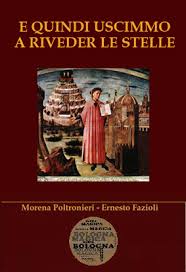
Di recente in classe abbiamo ripassato delle espressioni che non si
traducono facilmente in inglese; espressioni che hanno un significato
o un uso particolare. Eccone un’altra. Per la definizione qui riportata
mi sono riferita al dizionario online del CORRIERE DELLA SERA.
QUINDI [quìn-di] avverbio, congiunzione
1. Avverbio: letterario Di qui, di lì: “E quindi uscimmo a riveder le
stelle” (Dante Alighieri, La Divina Commedia, Inferno, Canto
XXXIV, 139)
2. Congiunzione
a. Con valore deduttivo-conclusivo, perciò, di conseguenza, per
questo motivo, dunque: Ero piuttosto nervoso, quindi ho preferito
evitare discussioni; Il tempo è pessimo, dobbiamo quindi rinunciare
alla gita; con lo stesso valore opera, come congiunzione, tra due
termini della stessa frase: È una persona distratta, quindi inaffidabile
|| E quindi?, in un dialogo per sollecitare una deduzione, nel
significato di “e con ciò?”, “e allora?”
b. Con valore temporale, poi; successivamente: Percorri la strada
fino in fondo, quindi gira a sinistra; “Diede una rassettata alle
coperte spiegazzate. Quindi uscì sulla terrazza” (Alberto Moravia
Gli indifferenti)
3. sec. XIII
In class recently we reviewed several expressions that do not
translate easily into English; expressions that have a particular
meaning or use. Here is another one. The Italian definition used
here is taken from the online dictionary of the Corriere della Sera.
QUINDI: adverb, conjunction
1. Adverb: literary, from here, from there: “And thence we came
forth to behold the stars once more.” (The final verse of Dante
Alighieri’s Inferno)
2. Conjunction
a. In a deductive-concluding sense it means: therefore, as a
consequence of, for this reason, thus: I was quite nervous,
therefore [quindi] I preferred to avoid any arguments; The
weather is awful, therefore [quindi] we have to give up on taking
the trip. In a similar way it functions as a conjunction between two
expressions in the same sentence: He’s distracted, therefore
[quindi] unreliable // And therefore [quindi/then] In a dialogue,
to solicit a conclusion, meaning “and? Meaning what?”, “and then?”
b. With a temporal value, then, at a later time: Follow the road to
the end, then [quindi] turn left. “She tidied up the crumpled covers,
then [quindi] she went out on the terrace.” Alberto Moravia.
This word became part of the Italian language during the 13th
century.
Saturday, September 21, 2019
|
|
|
| AGGETTIVI |
ADJECTIVES
|
| che indicano un periodo di tempo: |
that indicate a period of time:
|
| Giornaliero: |
Daily: |
mattutin
pomeridiano
serale
notturno
|
morning
afternoon
evening
notturno night/nocturnal |
Stagionale:
estivo
autunnale
invernale |
Seasonal:
spring-like
summery
autumnal
wintery |
Tempo:
orario/per ora
giornalieroweeklymensile
bimensile (due volte al mese)
bimestrale (che dura due mesi)
bimestrale (ogni due mesi)
trimestrale
semestrale
annuale
biennale
triennale
quinquennale
decennale
centennale |
Time:
hourly
daily
weekly
monthly
bimonthly/twice-monthly
bi-monthly/lasting two months
bi-monthly/every two months
quarterly/three-monthly
biannual/semiannual
annual
biennial/two-year
triennial/three-year
quinquennial/five-year
decenn period of time:ial/
every ten years
centennial
|
|
|

L’AVVERBIO GIÀ HA VARI USI:
1. Indica un evento compiuto o accaduto in un passato prossimo
o recente: Esempi: Quando Girolamo è arrivato alla stazione, il
treno era già partito. Ho troppo da fare; così ieri ero già in ufficio
alle sei del mattino.
2. Indica un evento che non occorre per la prima volta al passato:
Esempi: “Piacere di fare la Sua conoscenza, Dottor Marcantonio
ma credo che ci siamo già incontrati l’anno scorso alla conferenza
a Ferrara.” Vorrei un altro piatto di spaghetti, anche se ne ho già
mangiato uno, ho una fame da lupo.
3. Indica una previsione o una certezza futura: Esempi:
Margherita sa già come andrà a finire con i suoi, litigheranno e si
separeranno. Lina legge spesso i romanzi rosa, anche se sa già
come finiranno.
4. Quando già è usato da solo, indica essere in accordo: Esempio:
Lorenzo dice: “Quel film era eccezionale!” Elissa risponde: “Già,
veramente straordinario.”
THE ADVERB GIÀ IS USED IN VARIOUS WAYS:
1. It indicates an event that ended or happened in a recent past:
Examples: When Girolamo arrived at the station, the train had
already left. I have too much to do, so yesterday I was already in
my office by six a.m.
2. It indicates an event that doesn’t take place for the first time in
the past: Examples: “Pleased to meet you, Doctor Marcantonio,
but I believe we already met last year at the conference in
Ferrara.” I would like another plate of spaghetti, even if I already
ate one, I’m starving.
3. It indicates a prediction or future certainty:
Examples: Daisy already knows how it’s going to end up with her
parents, they’ll fight and separate. Lina often reads romance
novels, even if she already knows how they are going to end.
4. When già is used alone, it indicates agreement: Example:
Lawrence says: “That movie was exceptional!” Elissa answers:
“Già, (yes) really extraordinary.”
Saturday, September 7, 2019
|
|
Continuiamo il nostro studio degli indefiniti iniziato due
settimane fa.
Gli indefiniti indicano oggetti, persone, quantità non specifiche;
possono essere aggettivi, pronomi e/o avverbi. Piano piano,
affronteremo i vari tipi, ma ci vorrà del tempo e della pazienza.
 PARTE III PARTE III
Alcuni aggettivi indefiniti hanno solo funzione aggettivale e
sono invariabili, altri si usano solo nella forma singolare e altri,
come tutti gli aggettivi, concordano con il numero e ilgenere del
nome cui riferiscono.
E non dimentichiamo questi aggettivi variabili:
Altro: Esempi: Come ha detto Scarlett O’Hara, domani sarà un
altro giorno.
Ogni giorno ci regala un’altra esperienza.
L’avvocato ha bisogno di altri documenti.
Vorrei indossare delle altre scarpe, queste sono troppo strette.
Certo: Esempi: Chiara cerca un certo tipo di lavoro.
Giacomo è andato alla festa di una certa amica, credo che si
chiami Rita.
Giovanna si è messa in certi guai, speriamo bene!
Certe giornate gli pesano.
Quale: Esempi: Dottoressa Martini, quale ristorante preferisce
al centro?
Quale rivista leggi adesso?
Quali formaggi hai comprato per la cena di domani?
Quali città visiterete durante la vacanza?
Let’s continue our study of the indefinites begun two weeks
ago.
Indefinites indicate objects, persons, quantities that are not
specified; they can be adjectives, pronouns and/or adverbs.
Slowly, we will look at the various kinds, but it will take time
and patience.
INDEFINITE ADJECTIVES-PART III
Several indefinites only have an adjectival use and are
invariable, others are used only in the singular, and others,
like all other adjectives, agree in number and gender with
the noun the modify.
So, let’s not forget these variable adjectives:
Altro/(an)other: Examples: As Scarlett O’Hara said: “After
all, tomorrow is another day!”
Every day gives us another experience.
The attorney needs other documents.
I would like to wear other shoes, these are too tight.
Certo/certain: Examples: Chiara is looking for a certain kind
of job.
Giacomo went to a certain friend’s party, I think her name is
Rita.
Giovanna is in quite a mess, let’s hope for the best!
Some days weigh on him.
Quale/which: Examples: Dr. Martini, which restaurant do
you prefer in town?
Which magazine are you reading now?
Which cheese did you buy for tomorrow’s dinner?
Which cities will you visit during your vacation?
Saturday, August 31, 2019
|
|
La settimana scorsa abbiamo incominciato il nostro studio
degli indefiniti, continuiamolo insieme.
Gli indefiniti indicano oggetti, persone, quantità non specifiche;
possono essere aggettivi, pronomi e/o avverbi. Piano piano,
affronteremo i vari tipi, ma ci vorrà del tempo e della pazienza.
 PART II PART II
Alcuni aggettivi indefiniti hanno solo funzione aggettivale e sono
invariabili, altri si usano solo nella forma singolare e altri, come
tutti gli altri aggettivi concordano con il numero e il genere del
nome cui riferiscono.
Alcuni indicano una singola quantità:
Molto/Tanto: Esempi: Non ho molto/tanto tempo.
Mario è a dieta, non mangia molta/tanta pasta a pranzo, vuole
dimagrire.
Gemma è andata a fare la spesa ieri, e ha comprato molti/tanti
pasticcini.
La Dottoressa Andreini ha molte/tante amiche.
Parecchio: Esempi: Sfortunatamente ho parecchio da fare e non
posso uscire con voi.
Renato ha sprecato parecchia carta, la sua stampante era
guasta.
Isabella ha letto parecchi libri durante la sua convalescenza.
Tina ha piantato parecchie rose nel suo giardino.
Poco: Esempi: Irene ha poco spazio nei cassetti; compra troppe
cose.
Michele ha poca pazienza con i figli.
Dopo l’università, mi sono rimasti pochi soldi in banca.
Confronto all’anno scorso, ha ricevuto poche cartoline di auguri.
Troppo: Esempi: Pietro ha troppo tempo libero, si annoia,
dovrebbe fare del volontariato.
Il loro figlio ha troppa energia, è stancante fargli da babysitter.
Ci sono troppi libri sulla libreria, sta per cedere.
Questi giorni ho troppe cose da fare.
Last week we began our study of infinitives, let’s continue.
Indefinites indicate objects, persons, quantities that are not
specified; they can be adjectives, pronouns and/or adverbs.
Slowly, we will look at the various kinds, but it will take time
and patience.
INDEFINITE ADJECTIVES-PART II
Several indefinites only have an adjectival use and are
invariable, others are used only in the singular, and others, like
all other adjectives, they agree in number and gender with the
noun the modify.
Some adjectives refer to a singular quantity:
Molto/Tanto: a lot/many/much: Examples: I don’t have a lot of
time.
Mario is on a diet, he doesn’t eat much pasta for lunch; he
wants to slim down.
Gemma went grocery shopping yesterday and bought many
pastries.
Dr. Andreini has many friends.
Parecchio: a lot/many: Examples: Unfortunately I have a lot to
do and I can’t go out with you.
Renato wasted a lot of paper, his printer is broken.
Isabella read many books during her convalescence.
Tina planted many roses in her garden.
Poco/little/few: Examples: Irene has little space in her
drawers, she buys too much.
Michael has little patience with his children.
After university, I have little money left in the bank.
Compared to last year, she received few birthday cards.
Troppo/too much/too many: Examples: Peter has too much
free time, he gets bored, he should do some volunteer work.
Their son has too much energy, it’s exhausting being his
babysitter.
There are too many books on the shelf, it’s about to give way.
These days I have too many things to do.
Saturday, August 24, 2019
|
|
Che ne dite, apriamo un vaso di Pandora? Perché no?
GLI INDEFINITI!

Gli indefiniti indicano oggetti, persone, quantità non specifiche;
possono essere aggettivi, pronomi e/o avverbi. Piano piano,
affronteremo i vari tipi, ma ci vorrà del tempo e della pazienza.
Allora, incominciamo con gli aggettivi!
LI AGGETTIVI INDEFINITI-PARTE I
Alcuni indefiniti hanno solo funzione aggettivale e sono
invariabili, altri si usano solo nella forma singolare e altri, come
tutti gli aggettivi concordano con il numero e il genere
del nome
cui riferiscono.
1. Gli aggettivi indefiniti invariabili sono:
Qualche: Qualche volta preferisco andare in palestra; altre
volte fare una passeggiata lungomare.
Qualunque/Qualsiasi: Qualunque/Qualsiasi colore tu scelga per
tappezzare il divano, per me va bene, tranne l’arancione, si
capisce.
Ogni: Ogni volta che entro in quella profumeria mi viene il mal
di testa.
2. Certi aggettivi indefiniti hanno solo la forma singolare:
Alcuno: Non ho alcun dubbio, mi sono innamorata di Andrea.
Ciascuno: Ciascuna persona che entra, deve pagare il prezzo
fisso, non ci sono sconti oggi.
Nessuno: Nessuno studente ha superato l’esame, che disastro!
ATTENZIONE: questi aggettivi sono usati proprio come gli
articoli indefiniti: un, uno, una, un’. Forse sarebbe una buona
idea ripassarli.
What do you think, should we open Pandora’s box?
Why not? Indefinites!
Indefinites indicate objects, persons, quantities that are not
specified; they can be adjectives, pronouns and/or adverbs.
Slowly, we will look at the various kinds, but it will take time and
patience. So, let’s start with adjectives.
INDEFINITE ADJECTIVES-PART I
Several indefinites only have an adjectival use and are
invariable, others are used only in the singular, and others,
like all other adjectives agree in number and gender with the
noun the modify.
1. Invariable indefinite adjectives are:
Qualche: Some: Sometimes I prefer to go to the gym, others
to take a walk along the shore.
Qualunque/Qualsiasi: Any/whichever color you choose to
recover the sofa is fine with me, except orange, of course.
Ogni: Each time I enter that perfume shop, I get a headache.
2. Some indefinite adjectives have only a singular form:
Alcuno: Not any: I have no doubt that I’m in love with Andrew.
Ciascuno: Each person who enters, must pay the fixed price,
there are no discounts today.
Nessuno: No one: Not one student passed the exam, what a
disaster!
CAREFUL: these adjectives are used just like the indefinite
articles: un, uno, una, un’. Perhaps it would be a good idea to
review them.
Saturday, August 17, 2019
|
|
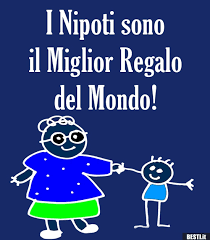
NIPOTE = NIECE, NEPHEW, GRANDDAUGHTER OR
GRANDSON?
Perché l’italiano non ha due (o più) termini diversi per indicare
i figli/le figlie dei figli/delle figlie o i figli/le figlie dei fratelli/
delle sorelle? È anche da ricordare che la parola nipote è
ambigenere, e solo l’articolo consente la distinzione tra maschi
e femmine.
Mi rivolgo all’Accademia della Crusca per la risposta:
“Probabilmente, il fatto che l’italiano non distingua tra due
gradi di parentela, che pure sono certamente diversi, si lega
all’organizzazione familiare tra Tardo Antico e Alto Medioevo,
che equiparava i diritti e i doveri di nonni e zii nei confronti dei
figli dei fratelli o dei figli e viceversa. Ricordiamo che nel latino
classico il maschile nepos e il femminile nepis indicavano solo i
figli del figlio o della figlia e la loro estensione al posto di filius/
filia fratis o sororis risale all’epoca imperiale.”
Per non confonderci allora possiamo sempre dire la figlia di
mio figlio (=mia nipote) o la figlia di mia sorella (=mia nipote).
L’inglese è più specifico in questi riguardi.
NIPOTE = NIECE, NEPHEW, GRANDDAUGHTER OR
GRANDSON?
Why is it that Italian doesn’t have two (or more) different
words to indicate the sons/daughters of sons/daughters or
the sons/daughters of brothers or sisters? It is also
important to remember that the word nipote has a common
gender (neither feminine nor masculine), and only the article
allows the distinction between boys and girls.
I turn to the Accademia della Crusca for the answer:
“Probably, the fact that Italian doesn’t distinguish between
the degrees of relatives that are certainly different, is tied to
the organization of the family between the Late Ancient
Period and the High Middle Ages, that equalized the rights
and the duties of grandparents and uncles with regard to the
children of brothers or children or vice versa. Remember that
in classical Latin the masculine nepos and the feminine nepis
indicated only the sons of the son or daughter and their
extension to the position of filius/filia fratis or sororis dates
to the imperial era.”
In order not to be confused we can always say the daughter
of my son (=mia nipote) or the daughter of my sister
(=mia nipote). English is much more specific in this regard.
Saturday, August 10, 2019
|
|

La parola “PIUMINO” ha varie traduzioni in inglese,
esaminiamole!
1. Il piumino è una trapunta imbottita: Mia nonna era famosa
per i suoi piumini, io ne ho uno sul mio letto, è magnifico.
2. Il piumino è un giubbotto imbottito: A San Francisco,
anche d’estate è necessario indossare un piumino, con la
nebbia fa un freddo infernale.
3. Il piumino è un piumaggio morbido: Io preferisco un
cuscino imbottito di piumino.
Ma esistono anche altri significati:
1. Il piumino è un tipo di proiettile: Stai attento, quel fucile
spara piumini.
2. Il piumino è un accessorio da toilette: Molti anni fa andava
di moda incipriarsi con un piumino.
3. Il piumino è un arnese per spolverare: Gli scaffali hanno
bisogno di una spolverata, usa il piumino.
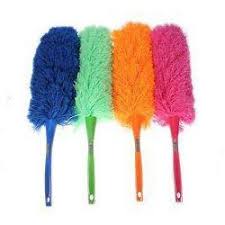
The word PIUMINO has different translations into English;
let’s take a look at them.
1. “Il piumino” is a quilt, a comforter, or a duvet: My grandmother
was famous for her quilts, I have one of them on my bed; it’s
magnificent.
2. “Il piumino” is a down anorak or a quilted jacket: In San Francisco,
even during the summer a down jacket is necessary, with the fog it’s
beastly cold.
3. “Il piumino” is down: I prefer a down-filled pillow.
However, there are other meanings:
1. “Il piumino” is a type of projectile: Be careful, that rifle shoots darts.
2. “Il piumino” is an accessory for the toilette: Many years ago it was
fashionable to powder one’s nose with a powder puff.
“Il piumino” is a device to dust with: The bookcases need dusting, use
the feather duster.
Saturday, August 3, 2019
|
|
PILLOW = CUSCINO O GUANCIALE? PARTE I
C’è una differenza tra un cuscino e un guanciale, in inglese c’è solo una parola: pillow. Secondo il Vocabolario Treccani della Lingua Italiana ci sono due significati diversi, eccoli: Il cuscino viene dal latino medievale, coxinum, una derivazione di coxa “coscia”, quindi “cuscino per sedere”. È una specie di sacchetto di forma rettangolare, quadrata, oppure tonda, ovale, generalmente di tela e ricoperto di una federe, o per usi ornamentali, di stoffe pregiate o di pelle, imbottito di lana, piume, crine, gommapiuma, ecc. cuscino da letto, i cuscini del divano (non è rispettata dall’uso la distinzione etimologica tra il guanciale, [deriva dal termine tedesco wanga
o wanka per guancia] che è proprio fatto per appoggiarvi la guancia, e il cuscino, che più propriamente serve per rendere morbide seggiole e poltrona o si adopera come ornamento sopra divani e simili). Per esempio: appoggiare la testa sul cuscino; stare semidisteso sorretto da due cuscini, dormire tra due cuscini, anche in senso figurato (ma più comune, tra due guanciali).

Is there a difference between a cuscino and a guanciale, in English there is only one word: pillow. According to the Dictionary of the Italian Language published by Treccanithere are two different meanings, here they are:
The cuscino comes from Medieval Latin coxinum, a derivation of coxa, “thigh”,therefore a “pillow to sit on”. It is a type of sack of rectangular, square, round or oval shape, usually made of canvas and covered by a pillowcase; or for ornamental use,made of fine fabrics or leather, stuffed with wool, feathers, horsehair, foam rubber, etc. bed pillow, couch pillows (the etymological distinction of use is not respected regarding guanciale [it derives from the German “wanga” or “wanka” for cheek] which is specifically
designed to lay your cheek upon, as opposed to cuscino, which more specifically is used to make chairs and armchairs softer and is used as an
adornment on couches and the like). For example: lean your head on a pillow [cuscino]; partially lay down supported by two pillows [cuscini], sleep between two pillows [cuscini], even in a figurative sense (but more commonly between two pillows [guanciali].
Saturday, July 20, 2019
|
|
INTERVIEW = INTERVISTA O COLLOQUIO?
Troppo spesso negli Stati Uniti la parola “INTERVIEW” è tradotta come
“intervista” senza pensare che ci sia una scelta.

Di nuovo, cito la Treccani: <<UN’INTERVISTA è un colloquio che un
giornalista, un corrispondente di agenzia, un radiocronista o altra
persona appositamente incaricata ha con una personalità politica, con
rappresentanti del mondo della cultura, dell’arte, dello sport, ecc. o in
genere con persone legate a fatti di cronaca, per averne dichiarazioni,
opinioni, notizie su determinati argomenti (di solito proposti attraverso
una serie di quesiti), che sono pubblicate poi su un giornale o
trasmesse per radio o televisione.>>
UN COLLOQUIO è: <<uno scambio di parole tra due persone o più, di
solito su argomenti di qualche importanza, una conversazione,
dialogo, discussione, discorso.>> È uno scambio di idee e di opinioni su
questioni d’interesse comune. È anche un esame svolto sotto forma di
conversazione, a volte richiesto in alcune facoltà universitarie, o un
colloquio che si sostiene per ottenere un incarico o un impiego.
All too often in the United States the word “INTERVIEW” in translated
into Italian as “INTERVISTA” without taking into consideration that
there may be an alternative.
Again, I quote from the Treccani dictionary of the Italian language:
<<INTERVISTA, is a dialogue, a conversation that a journalist, a
correspondent from an agency, a radio reporter, or other individual
specifically appointed has with politicians, representatives of the
world of culture, art, sport, etc., or generally with individuals tied to
news reporting, in order to obtain declarations, opinions, information
on specific arguments (usually carried out through a series of
questions), that are published in newspapers or aired on the radio or
television.>>

“COLLOQUIO”: <<an exchange of words between two or more
individuals, usually on subjects of some importance, a conversation,
dialogue, discussion, discourse.>> It is an exchange of ideas and
opinions on matters of common interest. It can also be an exam
which takes places as a conversation, at times a requirement for
admission to certain university departments, or an interview held in
order to obtain an appointment or a job.
Saturday, July 13, 2019
|
|
COGLIAMO QUEST’OCCASIONE PER AUGURARE A TUTTI I NOSTRI
AMICI STATUNITENSI UN FELICE 4 LUGLIO, GIORNO
D’INDIPENDENZA.
NON DIMENTICHIAMO CHE IN ITALIA LA FESTA DELLA REPUBBLICA
SI FESTEGGIA IL 2 GIUGNO (data del referendum istituzionale del
1946).
TANTI
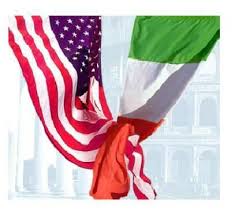
AUGURI
WE TAKE ADVANTAGE OF THIS OPPORTUNITY TO WISH ALL OF OUR
AMERICAN FRIENDS A HAPPY 4TH OF JULY, INDEPENDENCE DAY.
DON’T FORGET THAT IN ITALY THE ESTABLISHMENT OF THE
REPUBLIC OF ITALY IS CELEBRATED ON JUNE 2ND (the date of the
referendum of 1946).
Saturday, July 6, 2019
|
|
LE DOPPIE—PARTE IV
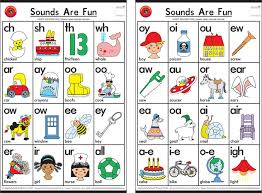
Ho trovato un articolo eccellente sul sito dell’Enciclopedia dell’italiano
della Casa Editrice Treccani, scritto nel 2011 da Andrea Viviani. Vorrei
condividerlo con voi lettori in varie parti.
DOPPIE VOCALI (conclusione)
Possono darsi in italiano anche doppie vocali. ⟼ Sigle a parte, esse sono
rarissime in inizio parola e non con tutte le vocali: si hanno in sostanza
la sola esclamazione aah! Ooh!,l’aggettivo raro aaeliano e un nutrito
contingente in oo-, prefisso che in medicine e biologia significa
<<uovo>>: ooblasto, oociesci, ecc.; sono però com’è evidente, termini
tutti fuori dall’uso comune.
Meno rare le doppie vocali sono in fine di parola, e in particolare:
- Con oo si danno numerose parole dal suffisso –zoo <<animale,
vivente>>: protozoo, spermatozoo, lo stesso zoo e forestierismi
vari: tattoo, voodoo, (quando non adattato invudù), Waterloo, ecc.;
- Non si ha in uu a eccezione dell’interiezione buu, che esprime
disapprovazione, o l’ideofono fiuu (⟼ onomatopee e
fonosimbolismo), che riproduce il vento o sottolinea uno scampato
pericolo;
frequentissime, per un totale di diverse migliaio, sono invece le vocali
doppie all’interno di parola; per la sola a si danno nel variegatissimo
quadro forestierismi(afrikaans), composti (extraamniotico), nome propri
e derivati da (kierkegaardiano), toponimi derivati (maastrichtiano). Con
l’eccezione di uu presente solo in termini o locuzione d’origine latina
(continuum, vacuumterapia, in perpetuum), doppie vocali sono
rappresentate in tutte le categorie del nostro lessico, termini di più largo
uso inclusi: cooperativa, coonestare, coorte, ecc.
All’incontro di due vocali identiche che appartengono a parole diverse in
sequenza, cade quella finale della prima. È in principio alla base
dell’impiego dell’⟼apostrofo:quest’oggi, un’anatra.
Alcune parole prefissate danno luogo a doppia vocale: preesame,
antiilluministico. In questi casi, tra prefisso e parola si suole inserire un
⟼ trattino: pre-esame, anti-illuministico. Non si inserisce trattino, in
vece, nei ⟼ numerali ordinali composti col numero tre: ventitreesimo.
DOUBLE LETTERS—PART IV
I found an excellent article written by Andrea Viviani on the website of
the Publishing House Treccani for the Encyclopedia of Italian. I would
like to share it with you readers in various sections.
DOUBLE LETTERS—PART IV (conclusion)
I found an excellent article written by Andrea Viviani on the website of
the Publishing House Treccani for the Encyclopedia of Italian. I would
like to share it with you readers in various sections.
You can even find double vowels in Italian, putting aside acronyms, they
are extremely rare at the beginning of words and don’t apply to all
vowels: there are the exclamations aah! Ooh!,(no need to translate
here), the rare adjective aaeliano (I have no idea where they found this
one) and a temporary nutrition in oo-, a prefix that in medicine and
biology means <<egg>>: ooblasto, oociesci, etc. which are obviously
terms way outside of common usage.
Less rare among the double vowels are at the end of words, specifically:
- With oo there are many words with the suffix –zoo <<living animal>
>: protozoo, spermatozoo, along with the word zoo itself and
various foreign terms: tattoo, voodoo(when the latter isn’t found in
the form of vudù), Waterloo, etc.;
- The uu doesn’t exist except in the interjection buu, that expresses
disapproval, or the idiophone fiuu (onomatopoeia and phonic
symbolism), which copy the wind and underline a danger avoided;
very frequent, for a total of several thousands, are double vowels
found inside words, only for the letter a there is a large variety with
foreign derivations (Afrikaans), and compound words
(extraamniotico), proper nouns derived from (kierkegaardiano), and
place names derived from (maastrichtiano). With the exception of
uu found only in terms with Latin origins (continuum,
vacuumterapia, in perpetuum), double vowels are represented in all
of the categories of our lexicon. Terms of wide use include
cooperativa, coonestare, coorte, etc.
Where two identical vowels which belong to different words in sequence,
the later from the first word is dropped, this is the beginning of the use
of the apostrophe: quest’oggi, un’anatra. Certain words with prefixes use
double vowels: preesame, antiilluministico. In these instances it is
common to insert a hyphen: pre-esame, anti-illuministico. However, a
hyphen is not used in compound ordinal numbers with the number three:
ventitreesimo.
Saturday, June 29, 2019
|
|

LE DOPPIE—PARTE III
Ho trovato un articolo eccellente sul sito dell’Enciclopedia dell’italiano
della Casa Editrice Treccani, scritto nel 2011 da Andrea Viviani. Vorrei
condividerlo con voi lettori in varie parti.
DOPPIE VOCALI (parte III- introduzione)
Possono darsi in italiano anche doppie vocali. ⟼ Sigle a parte, esse
sono rarissime in inizio parola e non con tutte le vocali: si hanno in
sostanza la sola esclamazione aah! Ooh!,l’aggettivo raro aaeliano e
un nutrito contingente in oo-, prefisso che in medicine e biologia
significa <<uovo>>: ooblasto, oociesci, ecc.; sono però com’è
evidente, termini tutti fuori dall’uso comune.
Meno rare le doppie vocali sono in fine di parola, e in particolare:
- Inesistenti con aa, sono invece numerosissime le parole in ee,
per quando siano autoctoni i soli plurali delle parole in –ea
(cornea, marea) o –eo (spontaneo); la maggior parte è formata
da ⟼ grecismi (calchee, eraclee), ⟼ francesismi (tutti in accentati
sulla prima delle due vocali: matinée, tournée) e ⟼anglicismi
(duty free, frisbee); anche linea ha per derivato lineetta, da cui il
composto guardalinee;
- Con ii si hanno solo i plurali delle parole in –io -quando non ridotti,
nell’uso attuale, a una sola i (corridoi è preferito a corridoii,
monopoli a monopolii, ecc.), o scapati alla consuetudine, ormai
rara, dell’accento circonflesso (principî, o a quella, decisamente
desueta, della j: studj) – che abbiamo la i tonica: pii, zii, e dai
passati remoti di prima persona singolare dei verbi in –ire: dormii,
partii, ecc.;
[La conclusione continua la settimana prossima.]
DOUBLE LETTERS—PART III (introduction)
I found an excellent article written by Andrea Viviani on the website
of the Publishing House Treccani for the Encyclopedia of Italian. I
would like to share it with you readers in various sections.
You can even find double vowels in Italian (putting aside acronyms)
they are extremely rare at the beginning of words and don’t apply to
all vowels. There are the exclamations aah! ooh! (no need to
translate here), the rare adjective aaeliano (I have no idea where
they found this one) and a temporary nutrition in oo-, a prefix that in
medicine and biology means <<egg>>:ooblasto, oociesci, etc. which
are obviously terms way outside common usage.
Less rare among the double vowels are at the end of words,
specifically:
- Nonexistent with aa, the words in ee are very numerous in as
much as only the plurals are autochthon, for example: –ea
(cornea, marea) or –eo (spontaneo); most of these words have
Greek roots: (calchee, eraclee), French roots (all of the accents
are on the first of the two vowels: matinée, tournée) and English
roots (duty free, frisbee); evenlinea, has as a derivative lineetta,
and the compound word guardalinee;
- With the ii there are only the plurals of words ending in –io when
they haven’t been shortened in present-day usage to a single i
(corridoi is preferable to corridoii, monopolito monopolii, etc.),
or removed by now from the rare use of the circumflex accent
(principî, or the decidedly not used j: studj), we have the tonic i:
pii, zii, and in the first person singular of the past absolute tense
of 3rd category verbs ending in –ire: dormii, partii, etc.,
[The conclusion continues next week.]
Saturday, June 22, 2019
|
|
LE DOPPIE—PARTE II

Ho trovato un articolo eccellente sul sito dell’Enciclopedia dell’italiano
della Casa Editrice Treccani, scritto nel 2011 da Andrea Viviani.
Vorrei condividerlo con voi lettori in varie parti.
DIFFICOLTÀ E PROBLEMI
Le doppie suscitano problemi di ortografia a causa di
1. Pressioni dialettali: al Nord della Penisola, nella pronuncia la
tendenza generale è allo⟼ scempiamento, alla cancellazione cioè di
una delle doppie: a[fit]o per affitto; cava[let]o per cavalletto, ecc.; al
Centro-Sud, viceversa, è sistematica la pronuncia intensa di “b” e “g”
tra vocali; ta[bb]ella per tabella, cu[gg]ino per cugino, ecc.;
naturalmente questi fenomeni possono avere riflessi nella scrittura;
2.
Vicende etimologiche che perturbano la coerenza del sistema, in
particolare nel caso della “z” sia sorda sia sonora: sempre ‘intensa’
nella pronuncia standard di base toscana, nella grafia può occorrere
correttamente prima singola, poi doppia, poi ancora singola, perfino
all’interno della stessa parola: razionalizzazione.
DOUBLE LETTERS—PART II
I found an excellent article written by Andrea Viviani on the website
of the Publishing House Treccani for the Encyclopedia of Italian. I
would like to share it with you readers in various sections.
DIFFICULTIES AND PROBLEMS
Double letters cause spelling problems because of:
- Dialectal pressures: in the North of the Peninsula, the general
pronunciation is towards shortening, or the elimination of one of
the double letters: a[fit]o for affitto (rent); cava[let]o for
cavalletto (easel), etc.; in the Central and Southern parts of the
country, intense pronunciation is common of the letters “b” and
“g” between vowels: ta[bb]ellafor tabella (chart), cu[gg]ino for
cugino (cousin), etc.; naturally these characteristics can be
reflected in writing;
Etymological occurrences that disturb the coherence of the system,
particularly in the case of the “z”, both unvoiced and voiced: always
‘intense’ in the standard pronunciation of Tuscan, in writing it can
occur for the first time correctly as a single letter, then as a double,
and even inside the same word: razionalizzazione (rationalization).
Saturday, June 15, 2019
|
|
LE DOPPIE—PARTE I
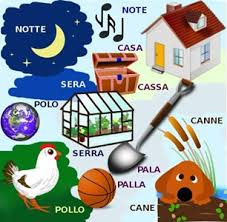
Ho trovato un articolo eccellente sul sito dell’Enciclopedia dell’italiano
della Casa Editrice Treccani, scritto nel 2011 da Andrea Viviani.
Vorrei condividerlo con voi lettori in varie parti.
LA NATURA E LE RESTRIZIONI DELLE DOPPIE LETTERE:
In italiano diverse parole grafiche contengono lettere ripetute
tradizionalmente chiamate doppie (⟼le doppie, o le doppie lettere).
La ripetizione riguarda principalmente le consonanti. In particolare,
va osservato che:
1. Le doppie sono solo precedute e seguite da vocale: mai, quindi, in
inizio o fine di parola (fanno eccezione i forestierismi ormai in uso
comune: call, pull, lloyd, ecc.);
2. Hanno valore distintivo: esistono cioè coppie di parole che si
distinguono proprio per la presenza o assenza della doppia: pala ~
palla; caro ~ carro; copia ~ coppia; sete ` sette, ecc.
3. Graficamente sono possibili con tutte le consonanti tranne la “h”
e i digrammi e i trigrammi: <gn; gl(i), sc(i); e La “q” è doppia sono in
due parole: soqquadro e il tecnicismo musicale beqquadro (variante
di bequadro).
DOUBLE LETTERS—PART I
I found an excellent article written by Andrea Viviani on the website
of the Publishing House Treccani for the Encyclopedia of Italian. I
would like to share it with you readers in various sections.
THE NATURE AND RESTRICTIONS OF DOUBLE LETTERS:
In Italian, various graphic words contain letters that are repeated,
traditionally called doubles ( the doubles, or double letters). The
repetition mainly deals with consonants. In particular, it must be
noted that:
1. Doubles are preceded and followed by a vowel, never, therefore,
at the beginning or at the end of a word (the exceptions are
foreignism in common use: call, pull, lloyd, etc.);
2. They have a distinctive value: meaning that there exist pairs of
words that are distinguished precisely by the presence or absence
of a double letter: pala ~ palla [shove ~ ball]: caro ~ carro [dear ~
wagon]; copia ~ coppia [copy ~ couple]; sete ~ sette [thirst ~
seven]; etc.
3. Graphically speaking doubles are possible with all the cons
onants except the “h” and the digraphs and the trigraphs: <gn; gl(i)
, sc(i); and The “q” is doubled only in two words: soqquadro
[disorder/confusion] and the technical musical term beqquadro
[natural] (a variation of bequadro).
The “q” is doubled only in two words: soqquadro [disorder/confusion]
and the technical musical term beqquadro [natural] (a variation of
bequadro).
Saturday, June 8, 2019
|
|
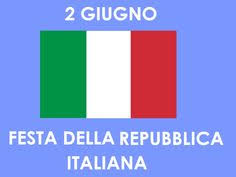
La FESTA DELLA REPUBBLICA ITALIANA: Dopo la fine della
seconda guerra mondiale, l’Italia doveva scegliere se rimanere
monarchia costituzionale o diventare repubblica. Per la prima volta
le donne avevano il voto, e hanno votato! Erano circa 13 milioni di
donne e circa 12 milioni di uomini, l’equivalente all'89,08% degli
allora 28.005.449 aventi diritto al voto.
BUON 73° COMPLEANNO ITALIA!
FESTA DELLA REPUBBLICA ITALIANA: After the end of the Second
World War, Italy had to choose to remain a constitutional monarchy
or become a republic. For the first time women were given the vote,
and they voted! Approximately 13 million women and 12 million men
voted, the equivalent of 89.08% of the then 28,005,449 individuals
having the right to vote.
HAPPY 73RD BIRTHDAY ITALY! hell
Saturday,June 1, 2019
|
|
Secondo dei fatti ritrovati sul sito web di L'Organizzazione
delle Nazioni Unite per l'alimentazione e l'agricoltura, in
sigla FAO,
Sapete che:
1. L’Italia è il produttore maggiore di riso in Europa?
2. La Lombardia e il Piemonte sono considerati il bacino
del riso d’Italia?
3. La produzione di riso è incominciata verso la metà del
XV secolo?
4. Leonardo da Vince è riconosciuto per il suo contributo
della costruzione dei canali che drenano l’acquitrino della
pianura padana?
5. Camillo Cavour ha campionato la costruzione alla fine
del 19° secolo del canale che porta l’acqua dal Fiume Po e
Lago Maggiore per mantenere la produzione di riso e altri
prodotti agricoli a Vercelli-Alessandria, Pavia e Novara? Il
canale porta il suo nome.

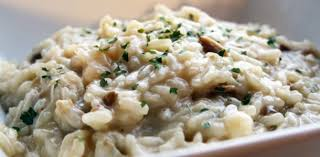
According to statistics found on the website of the Food
and Agricultural Organization of the United Nations, FAO
Did you know:
1. That Italy is the largest rice producer in Europe?
2. The regions of Lombardy and Piedmont are Italy's rice
bowl?
3. Rice production in Italy started around the middle of
the 15th Century?
4. Leonardo da Vinci is known for his contribution to the
building of channels to drain the marshlands of the Po
river plains?
5. Camillo Cavour championed the construction in the late
19th Century of a canal that brought water from the Po
River and Lake Maggiore to support the production of rice
and other crops in Vercelli-Alessandria, Pavia and Novara?
The canal is now called Cavour Canal.
Saturday, May 25, 2019
|
|
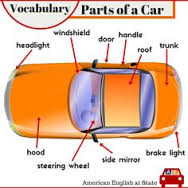
PARTS OF A CAR, PART II
This time I decided to provide you with automobile vocabulary
from English to Italian; it will make it easier when you purchase
your FIAT, Alfa Romeo, Maserati and/or Ferrari
|
| hatchback |
il portellone posteriore |
hazard/warning lights
|
il lampeggiatore d’emergenza |
| headlight |
il fanale anteriore |
| hood |
il cofano |
| ignition |
l’accensione |
| motor |
il motore |
| odometer |
il contachilometri |
| pedal |
il pedale |
| rear view mirror |
lo specchietto |
roof
|
il tetto |
seat
|
il sedile |
| seatbelt |
la cintura di sicurezza |
| side view mirror |
lo specchietto laterale |
| spare tire |
la ruota di scorta |
| speedometer |
il tachimetro |
| stearing wheel |
il volante |
tachometer
|
il contagiri |
| tire (informal) |
la gomma |
| tires |
i penumatici |
trunk
|
il bagagliaio |
windshield
|
il parabrezza |
| windshield wipers |
il tergicristallo |
|
|
Questa volta ho deciso di fornire una lista del lessico automobilistico
dall’inglese all’italiano; così l’acquisto della vostra FIAT, Alfa Romeo,
Maserati e/o Ferrari sarà più facile.
Saturday, May 18, 2019
|
|
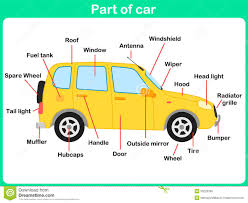
PARTS OF A CAR, PART I
This time I decided to provide you with automobile
vocabulary from English to Italian; it will make it
easier when you purchase your FIAT, Alfa Romeo,
Maserati and/or Ferrari.
| airbag |
l’airbag |
| backup light |
il proiettore di retromarcia |
| brake |
il freno |
| brake lever |
la leva del freno |
| brake lights |
le luci di stop |
| bucket seat |
il sedile anatomico |
| bumper/fender |
il paraurti |
| car door |
lo sportello |
| car horn |
il clacson |
| car keys |
le chiavi della macchina |
| chains |
le catene |
| clutch |
la frizione |
| cruse control |
il regolatore di velocità |
| dashboard |
il cruscotto |
| directional signal |
l’indicatore di direzione |
| door handel |
la maniglia |
| floor mat |
il tappetino |
| gas gauge |
l’indicatore della benzina |
| gas pedal/accelerator |
l’acceleratore (m) |
| gas tank |
il serbatoio della benzina |
| gear |
la marcia |
| gearshift |
la leva del cambio |
| glove box |
il cassetto portaoggett |
| GPS |
GPS |
Questa volta ho deciso di fornire una lista del lessico
automobilistico dall’inglese all’italiano; così l’acquisto
della vostra FIAT, Alfa Romeo, Maserati e/o Ferrari
sarà più facile.
Saturday, May 11, 2019
|
|
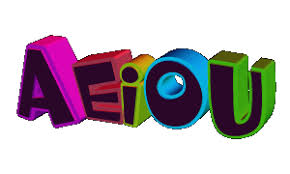
Che divertimento! Una lista di 18 parole italiane che contengono
tutte le vocali (NON RIPETUTE). Ce la fate a pronunciarle tutte?
| 1. Aiuole |
Flowebeds |
| 2. Aquilone |
Kite |
| 3. Aquilotte |
Little eagles |
| 4. Bruciapelo |
Point blank |
| 5. Crepuscolari |
Twilight/Hazey |
| 6. Documentari |
Documentaries |
| 7. Educatori |
Educators/Teachers |
| 8. Estuario |
Estuaries |
| 9. Funicolare |
Funicular/Cable railway |
| 10. Giuocare |
To play |
| 11. Maiuscole |
Uppercase/Capital letters |
| 12. Mutazione |
Mutation |
| 13. Persuasivo |
Persuasive |
| 14. Pneumatico |
Inflatable/Tire |
| 15. Profumeria |
Perfume shop |
| 16. Sciacquone |
Toilet flush |
| 17. Sequoia |
Sequoia/Redwood |
| 18. Umanesimo |
Humanism |
What fun! A list of 18 Italian words that contain all the vowels (not
repeated). Can you pronounce all of them?
|
|
GUARDIAMO IL TRAPASSATO REMOTO.

Il trapassato remoto è un tempo composto formato dal passato
remoto dell’ausiliare avere oessere + participio passato:
| Con avere: |
Io ebbi comprato |
Noi avemmo preso |
| |
Tu avesti finito |
Voi aveste dato |
| |
Lui/Lei ebbe scoperto |
Loro ebbero detto |
| Con essere: |
Io fui andata/o |
Noi fummo partite/i |
| |
Tu fosti uscita/o |
Voi foste sparite/i |
| |
Lei fu caduta |
Loro furono esiliate |
| |
Lui fu caduto |
Loro furono esiliati |
Il trapassato remoto descrive un’azione che ha luogo prima di
un’altra azione al passato remoto. È usato SOLO quando:
1. La frase principale è al passato remoto; e
2. Quando è introdotto da un avverbio di tempo: dopo che,
quando, (non) appena, finché.
Ecco alcuni esempi:
Dopo che il medico ebbe ingessato la gamba della bambina, lei si
sentì meglio.
Quando ebbero sentito l’allarme, i vigili del fuoco corsero
all’incendio.
Finché fummo contenti, restammo insieme.
LET’S LOOK AT THE PRETERITE PERFECT/PAST ANTERIOR
TENSE (TRAPASSATO REMOTO).
The preterite perfect is a compound tense formed by the past
absolute of the auxiliary verbsTo have (avere) or To be (essere)
+ past participle. [See above for these conjugations.]
The preterite perfect describes an action that takes place before
an action in the past absolute. It is used ONLY when:
1. The main phrase is in the past absolute; and
2. When it is introduced by an adverb of time: after, when, as
soon as, as long as.
Here are some examples:
After the doctor had put the girl’s leg in a plaster cast, she felt
better.
When they had heard the alarm, the firefighters ran to the blaze.
As long as we were happy, we stayed together.
|
|
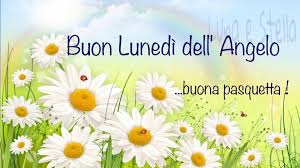
Il giorno dopo Pasqua ha vari nomi: lunedì dell'Angelo, lunedì di
Pasqua, oppure Pasquetta. È una festa sia religiosa sia civile. Il
nome della festa religiosa deriva da Matteo 28 1-6, dove è
descritto il giorno in cui le donne andarono alla tomba di Gesù e
trovandola vuota ebbero paura, ma apparve un angelo che disse
loro di non temere perché Gesù era risorto.
Il giorno dopo la domenica di Pasqua però è anche una festa civile
che fu introdotta dallo Stato italiano dopo la Seconda Guerra
Mondiale per allungare la festa di Pasqua. Di solito, nonostante il
proverbio “Natale con i tuoi, Pasqua con chi vuoi,” il lunedì
dell’Angelo è spesso trascorso con parenti e amici in una
scampagnata, un pic-nic all’aperto, o se fa brutto tempo, in una
trattoria in campagna.
Da dove viene questa tradizione? Un’interpretazione ha radici
religiose. Si dice che è bello fare una passeggiata o una
scampagnata fuori le mura della propria città per ricordare
l’apparizione di Gesù ai discepoli diretti a piedi verso la cittadina di
Emmanus.
Qualunque siano le origini, è un giorno divertente e rilassante.
Perciò, BUON DIVERTIMENTO!
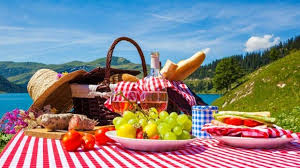
The day after Easter has several names: Monday of the Angel,
Easter Monday, or “Pasquetta” (literally, little Easter). It is both
a religious and lay holiday. The name for the religious holiday
comes from Matthew 28 1-6, where the day is described as the
one when the women went to Jesus’ tomb and finding it empty
they were afraid, but an angel appeared telling them not be
scared because Jesus had risen.
The day after Easter Sunday however is even a lay holiday that
was introduced by the Italian government after the Second World
War in order to lengthen Easter. Usually, notwithstanding the
proverb “Christmas with your family, Easter with whomever you
choose” Easter Monday is often spent with relatives and friends in
a “day trip to the country,” an open-air picnic, or if the weather is
bad, at a country restaurant.
Where does this tradition come from? One interpretation has
religious roots. It is said that it’s lovely to take a walk or to picnic
outside the city walls to remember the apparition of Jesus to the
disciples headed on foot the town of Emmanus.
Whatever the origins may be, it is a dun and relaxing day.
Therefore, ENJOY!
Saturday, April 20, 2019
|
|
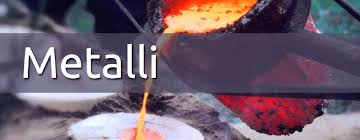
I metalli (in ordine alfabetico) e le loro leghe più comuni
sono:
· L’acciaio (leghe ferro-carbonio-cromo-nichel ed altri
metalli)-Steel
· L'alluminio (Al)-Aluminum
· L'argento (Ag)-Silver
· Il bronzo (lega rame-stagno, ma anche -alluminio,
-nichel, -berillio)-Bronze
· Il ferro (Fe)-Iron
· Il mercurio (Hg)-Mercury
· L'oro (Au)-Gold
· L'ottone (lega rame-zinco, con aggiunta di Ferro,
Stagno, ed altri metalli)-Brass
· Il platino (Pt)-Platinum
· Il piombo (Pb)-Lead
· Il rame (Cu)-Copper
· Lo stagno (Sn)-Tin
· Il titanio (Ti)-Titanium
· Lo zinco (Zn)-Zinc
The most common metals (in alphabetical order) and
their alloys are:
· Aluminum-Alluminio
· Brass-Ottone (combines copper and zinc, with addition
of iron, tin, and other metals·)
· Bronze-Bronzo (combines copper and tin, but also with
aluminum, nickel, beryllium)
· Copper-Rame
· Iron-Ferro
· Gold-Oro
· Lead-Piombo
· Mercury-Mercurio
· Platinum-Platino
· Silver-argento
· Steel-acciaio (combines iron, carbon, chrome, nickel,
and other metals)
· Tin: stagno
· Titanium-Titanio
· Zinc-Zinco
Saturday, April 13, 2019
|
|
COSA SONO LE CONGIUNZIONI AVVERSATIVE?
Le congiunzioni avversative sono congiunzioni semplici,
che indicano un rapporto conflittuale tra due clausole
nella stessa frase. Questo rapporto può essere espresso
in modi diversi:
1. Un’azione si svolge nonostante esista un
impedimento. Per esempio: Ho già cenato, ma
volentieri prendo un bicchiere di vino con voi.
2. Si spiega come possa esistere un ostacolo. Per
esempio: È tardi, dovrei già essere a casa a letto, però
non me la sento.
3. Indica come si possa fare qualcosa di più. Per
esempio: Avevo intenzione di lavare dei panni a mano,
ma andrò in lavanderia e farò vari carichi di bucato.
4. La frase può riferirsi a un evento irrealizzabile.
Per esempio: Preferisco rimanere a casa sotto le
coperte piuttosto che uscire, fa freddo.
Ecco un elenco di congiunzioni avversative con le loro
traduzioni in inglese:
| Anzi |
actually, on the contrary |
| Bensì |
but rather |
| Comunque |
anyway |
| D’altra parte |
on the other hand |
| D’altro canto |
on the other hand |
| Eppure |
yes, but still |
| Invece |
but instead |
| Ma |
but however |
| Nondimeno |
never the less, regardless |
| Nonostante |
despite, although |
| Però |
but, however |
| Sebbene |
even though, albeit |
| Tuttavia |
nevertheless |
WHAT ARE ADVERSATIVE CONJUNCTIONS?
Adversative conjunctions are simple conjunctions that
refer to a conflict between two phrases in a sentence.
This relationship can be stated in different ways:
1. An action is carried out notwithstanding the
existence of an impediment. For example: I already
had dinner but I will gladly join you for a glass of wine.
2. It explains how an obstacle may already exist: For
example: It’s late, I should already be home in bed,
but I don’t feel like it.
3. Indicates how an additional task can be carried out.
For example: I was planning on doing some laundry by
hand, however, I’ll go to the laundromat and do
several big loads.
4. The sentence could indicate an event that cannot
take place. For example: I prefer to stay home in bed
under the covers rather than go out. It’s cold.
For a list of adversative conjunctions, see above.
Saturday, April 6, 2019
|
|
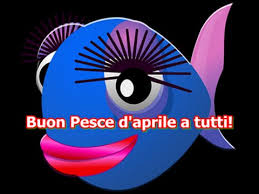
In Italia si dice Pesce d’aprile, negli Stati Uniti si
celebra il 1° aprile con “April Fool’s”. Controllate i miei
blog del 2016 e del 2017 per le origini di questa festa e
alcune espressioni italiane che hanno a che fare con i
pesci. Oggi invece, ho scelto di darvi una lista parziale
del vocabolario peschereccio. È perfetta per il 1° aprile.
BuonPESCE D’APRILE e BUON APPETITO!
- Alici = anchovies
- Anguilla = eel
- Busbana = Norwegian pout
- Calamaro = squid
- Canocchia = mantis shrimp
- Capasanta = scallop
- Cefalo = mullet
- Cernia = grouper
- Cozza = mussel
- Dentice = snapper
- Gambero = crayfish, shrimp, prawn
- Granchio = crab
- Lampuga = dolphinfish
- Merluzzo = cod
- Nasello = hake
- Occhiata = sea bream
- Pagello = Pandora, sea bream
- Palamita = bonito
- Pesce sciabola = scabbard fish
- Pesce spada = swordfish
- Polpo = octopus
- Razza = ray
- Riccio di mare = sea urchin
- Rombo = brill
- Sarago = pinfish, seabream
- Sardine = sardine
- Scampo = prawn
- Scorfano = rockfish, scorpion fish
- Sepia = cuttlefish
- Sgombro = mackerel
- Sogliola = sole
- Spigola = bass, sea bass
- Tonno = tuna fish
- Totano = squid
- Vongola = clam
|
|
| |
In Italy we say “Pesce d’aprile”, in the United States
April 1st is celebrated with April Fool’s. Read my blogs
from 2016 and 2017 for the origins of this holiday and a
few italian expressions tha have to do with fish. Today
however, I have chosen to give you you a partial list of
fish-related vocabulary. It’s perfect for April 1st.
HAPPY APRIL FOOL’S and BUON APPETITO!
Saturday, March 30, 2019
|
|
|
SALUTE!
Qual è la differenza tra “bicchiere da vino” e “bicchiere di vino”?
In inglese la differenza è più chiara, ma in italiano c’è solo una
lettera/una preposizione che li separa.
Un’immagine spiega tutto. Un bicchiere da vino è il calice in cui si
versa il liquido bianco,
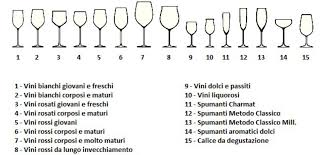
rosso, rosato, spumante, ecc.
Un bicchiere di vino è cosa abbiamo quando il vino è stato versato.

Andrea, ti prego di versarmi un bicchiere di Nebbiolo nel bicchiere
da vino rosso.
CHEERS!
What is the difference between “bicchiere da vino” and “bicchiere
di vino”? In English the difference is clear, but in Italian there is
only one letter/one presposition that separates them.
An image is worth a thousand words. A bicchiere da vino (wine
glass) is the goblet in which the liquid is poured, be it red, rosé,
white, sparkling, etc.
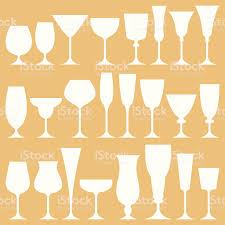
A bicchiere di vino (a glass of wine) is what we have once the
wine has been poured.
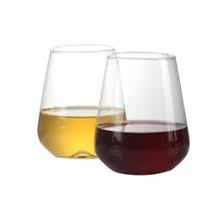
Andrew, please pour me a glass of Nebbiolo in the red wine
glass.
Saturday, March 23, 2019
|
|
SPENDERE= TO SPEND?
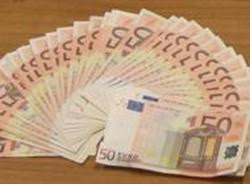
Dobbiamo stare attenti all’uso della parola SPENDERE; a volte il
significato è diverso da quello inglese TO SPEND.
1. Sborsare soldi: Marco ha deciso di spendere tutti i suoi risparmi
per comprare l’anello di fidanzamento a Linda.
2. Dedicare: Lui dovrebbe dedicare più energia agli studi.
3. Trascorrere: Ho deciso di trascorrere Pasqua con la mia
famiglia.
4. Pernottare: Il viaggio da Washington DC a Boston era lungo
per i bambini; perciò la famiglia Rossini ha deciso di pernottare a
New York.
We have to pay attention to the use of the Italian verb SPENDERE;
at times the meaning is different from the English term TO SPEND.
1. To spend money: Marco decided to spend all his savings in
order to purchase an engagement ring for Linda.
2. To use effort: He should spend more energy with his studies.
3. Spend time: I decided to spend Easter with my family.
Spend the night: The trip from Washington DC to Boston was long
for the children; so the Rossini family decided to spend the night in
New York.
Saturday, March 16, 2019
|
|
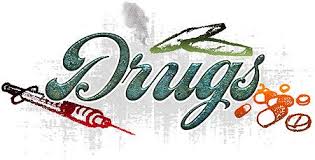
In inglese la parola “drug” può avere un significato sia benefico sia
negativo, illegale. In italiano ci sono termini diversi:
Se si tratta di una cosa benefica, diciamo: medicina, medicinale
ofarmaco.
Per esempio: La dottoressa ha prescritto dei farmaci per guarire la
malattia cronica del paziente.
L’amico del paziente è andato in farmacia per comprare l
emedicine prescritte dalla Dottoressa.
In ospedale, l’anestesista ha somministrato un medicinale alla
paziente prima dell’intervento chirurgico.
Se si tratta di una cosa contro la legge, diciamo: droga,
stupefacente, narcotico.
Per esempio: Il tossicodipendente ha cominciato con l’anfetamina,
adesso usa una droga molto più potente.
E poi, c’è la parola stimolante, per esempio: Il mio
stimolantemattutino è un doppio espresso.
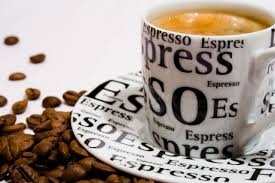
In English the word “drug” can have a beneficial or a negative,
illegal meaning. In Italian, there are different terms:
If we are dealing with something beneficial, we say: medicina,
medicinale o farmaco.
For example: The doctor prescribed certain drugs [farmaci] to
cure the chronic disease of her patient.
The patient’s friend went to the pharmacy to buy the drugs
[medicine] prescribed by the doctor.
In the hospital, the anesthesiologist administered a drug to
the patient before the operation.
If, on the other hand, we are dealing with something illegal, we
say: droga, stupefacente, narcotico. [drug, hallucinogen, narcotic]
For example: The addict started with amphetamines, now he is
using a much more potent drug.
And then, there is the other meaning of drug, for example: My
drug of choice in the mornings is a double espresso.
Saturday, March 9, 2019
|
|

La raccolta differenziata:
Quando vi trovate in Italia, a volte può confondervi in quale
recipiente porre i vostri rifiuti. Fino al 2013 non esisteva una
standardizzazione del colore per la raccolta differenziata
attraverso l’Italia. Con l’emissione della norma di legge UNI
840-1:2013 [Ente nazionale italiano di unificazione] le
dimensioni e i requisiti di progettazione dei contenitori per rifiuti
e riciclo, sono stati specificati. Lo schema è questo:
| Colore |
Tipo di rifiuto |
Tipo di trattamento |
| Verde |
Vetro (o multimateriale con
prevalenza vetro) |
Riciclabile |
| Blu |
Carta e cartone (o multimateriale
con prevalenza carta) |
Riciclabile |
| Giallo |
Plastica (o multimateriale con
prevalenza plastica) |
Riciclabile |
| Marrone |
Rifiuti organici (parte umida) |
Riciclabile |
| Turchese |
Metalli (alluminio e acciaio) |
Riciclabile |
| Grigio |
Secco indifferenziato |
Non riciclabile |
Separate your recycling:
When you are in Italy, at times you may be confused by which
bin to use for your garbage. Until 2013 a standardization of the
recycling bin-color did not exist throughout Italy. With the
passage of the law UNI 840-1:2013 the size and the
requirements for garbage and recycling bins were established.
This is the result:
Color |
Type of garbage |
How treated |
Green |
Glass (or mixed with mostly glass) |
Recyclable |
Blue |
Paper and cardboard (or mixed withmostly
paper) |
Recyclable |
Yellow |
Plastic (or mixed with mostly plastic) |
Recyclable |
Brown |
Organic waste (wet) |
Recyclable |
Turquoise |
Metals (aluminum and steel) |
Recyclable |
Gray |
Dry not separated |
Not recyclable |
Saturday, March 2, 2019
|
|
Quante volte si sbaglia questa parola; si dice “TELEVISORE” O
“TELEVISIONE”?
TELEVISORE (singolare maschile): Apparecchio ricevitore di un
sistema televisivo; è dotato di diversi comandi per regolare il
volume della voce, la luminosità delle immagini, cambiare
canale, ecc. Per sbaglio si dice anche televisione. Esempio:
Devo comprare un televisore nuovo, il mio non funziona più ma
non so quale marca sia la migliore.
|

|
TELEVISIONE (singolare femminile): 1. Sistema di trasmissione
a distanza d’immagini, attraverso onde radio o via cavo:
Esempio: l'invenzione della televisione ha cambiato il mondo;
2. Ente, organizzazione che gestisce gli impianti per tale tipo di
trasmissione, realizzandone i programmi: la RAI; televisione
privata, pubblica; lavorare nel mondo della televisione; 3. In
linguaggio quotidiano, per sbaglio, la parola è usata al posto
della parola maschile il televisore: Esempio: Devo accendere la
televisione; comprare una TV a colori; 4. Nel linguaggio
comune, è l’insieme dei programmi trasmessi dalle reti
televisive, Esempio: guardare la televisione; cosa c'è alla TV?
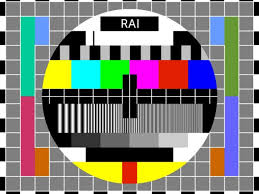
La cosa più facile è usare TV ma si deve stare attenti
agli articoli o alle preposizioni articolate!
How often is this word misused, is it “TELEVISORE” or
“TELEVISIONE”?
TELEVISORE (masculine singular): is the appliance that
receives a broadcast; it has commands that regulate volume,
brilliance, channels, etc. Incorrectly, people say televisione.
For example: I have to purchase a new televisore, mine no
longer works, but I don’t know what brand to buy.
TELEVISIONE (feminine singular): 1. Is the long-distance
transmission of images through radio waves or by cable; For
example: The invention of televisione changed the world; 2.
The company that runs the plants for this type of transmission,
resulting in its programs: RAI, private television, public
television; to work in the television field; 3. In everyday
parlance, erroneously, the word is used in place of the
masculine televisore; for example: I have to turn on the
televisione; I have to purchase a color TV; 4. In everyday
language it is the combination of programs broadcast on
television networks; for example: to watch televisione; what’s
on television?
The easiest thing is to say TV, but pay attention to the articles
and the prepositions that are combined with articles!
Saturday, Feb 23, 2019
|
|
TRATTARE E TRATTARSI—PARTE I
|

Recentemente in classe una studentessa mi ha domandato la
differenza tra “trattare” e “trattarsi”.
Non è una risposta che si può sbrigare in poche parole.
Incominciamo!
Quando il verbo trattare è transitivo, significa:
1. Dis cutere, sviluppare un tema: La studentessa hatrattato
esaurientemente il tema della sua tesi.
2. Condurre trattative, negoziare: Le due parti hanno trattato
l’armistizio per la divisione del territorio.
3. Comportarsi in un certo modo: La preside tratta gli studenti
con rispetto.
4. Trattare qualcuno con gentilezza, come un figlio, da amico,
ecc.: Teresa mi ha sempre trattata con gentilezza, proprio
come una sorella.
5. In senso medico, di occuparsi di: La mia dottoressa ha trattato
la ferita al mio ginocchio con cura.
Restate sintonizzati per il prossimo episodio: altri esempi del verbo
transitivo.
Recently in class a student asked me what the difference is
between “trattare” and “trattarsi”. It isn’t an answer that can be
taken care of in a few words. Let’s begin!
When “trattare” is a transitive verb it means:
1. To deal with, to treat or discuss or deal with a subject: The
student dealt with the subject of her thesis exhaustively.
2. To negotiate: The two sides negotiated the armistice for the
division of the territory.
3. Act in a certain fashion, handle: The principal treats the students
with respect
4. To treat someone with kindness, as a son/daughter/friend:
Teresa has always treated me with kindness, just like a sister.
5. Medically: to treat: My doctor treated the wound on my knee
with care.
Stay tuned for the next episode: more examples of the transitive
forms of “trattare”!
Saturday, Feb 15, 2019
|
|
SI DICE CIOCCOLATO O CIOCCOLATA?
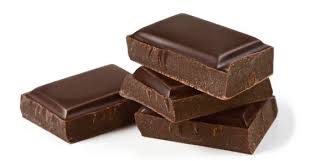
Quando leggiamo la voce nell’Accademia della Crusca [per altre
informazioni sull’Accademia della Crusca controllare la voce del
16 giugno 2018] troviamo che secondo il GRADIT: Grande
dizionario italiano dell’uso (2007) diretto da Tullio de Mauro,
“cioccolata e cioccolato, entrambi termini di alto uso, sono
sostanzialmente sinonimi”. Questo è precisato nel Dizionario
Sabatini-Coletti della lingua italiana (2008) dove cioccolata
riferisce a una bevanda calda a base di cacao sciolto nel latte e
cioccolato alla tavoletta solida. La maggior parte degli italiani
bevono una cioccolata calda in tazza e mangiano un pezzo di
cioccolato. L’italiano non è mai facile!
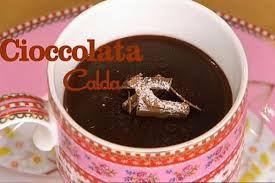
CHOCOLATE, WHICH VERSION DO WE USE IN
ITALIAN, THE MASCULINE OR THE FEMININE?
When we read the entry in the Accademia della Crusca [for
further information on the Accademia della Crusca, check the
entry of June 18, 2018] we find that according to the Great
Italian Dictionary of Usage (2007) directed by Tullio De Mauro,
‘both versions of the word chocolate (the feminine and the
masculine) in common use are basically synonyms’. This is
further defined in the Sabatini-Coletti Dictionary of the Italian
Language (2008) in which “cioccolata” (chocolate in the
feminine) refers to a hot drink made from dissolving cocoa in
milk while “cioccolato” (in the masculine) refers to the solid
chocolate bar. Most Italians drink hot chocolate in a cup
(feminine) and eat a piece of chocolate (masculine).
Italian is never easy!
Saturday, Feb 9, 2019
|
|
Tre proverbi per passare da un mese all’altro:
- Gennaio e febbraio, riempie o vuota il granaio.
- Gennaio e febbraio mettiti il tabarro. (Il tabarro è un
cappotto pesante e disadorno; anticamente un ampio
mantello.
- Se febbraio avesse tutti i giorni di gennaio, farebbe gelare
il vino nelle botti.
|

Three proverbs to transition from one month to the other:
· January and February, fill and empty the granary.
· In January and February put on your tabard. (A tabard
is a heavy and unadorned coat; in ancient times, a large
cape.)
· If February had as many days as January, it would
freeze all the wine in the barrels.
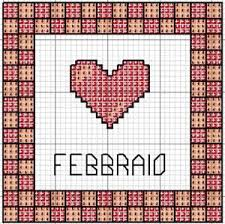
Saturday, Feb 2, 2019
|
|
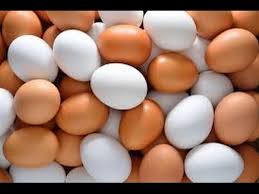 And what about “the shell”? And what about “the shell”?
La volta scorsa abbiamo parlato della buccia, la scorza e la pelle.
Non si può usare nessuna di queste parole con un uovo. L’uovo
ha un guscio. Questo termine è entrato a far parte del lessico
italiano nel XIV secolo e significa:
1. Involucro esterno duro o rigido, di varia struttura e origine,
con funzione protettiva: per esempio il guscio dell'uovo, delle
noci, dei piselli, dellatartaruga, dell’ostrica.
2. A uso figurativo stare nel proprio guscio significa chiudersi in
se stessi o nel proprio ambiente; mentre uscire dal guscio
significa aprirsi agli altri, fare nuove esperienze.
3. Il termine tecnico è una struttura di rivestimento di veicoli,
imbarcazioni, edifici ecc.
4. Una piccola costruzione di forma tondeggiante, per lo più di
plastica, usata come abitazione nei campeggi.
5. La forma architettonica si riferisce a una piccola modanatura
dal profilo concavo.
6. In Liguria è una barca che ha sia la prora e sia la poppa a
punta.
Last time we spoke about the fact that Italian has three words
for “peel”, la buccia, la scorza e la pelle, however we cannot
use any of these terms with an egg. The egg has a shell, un
guscio. This term became part of the Italian lexicon in the 14th
century and means:
1. The outer hard and rigid covering of differing structure and
origin with a protective use; for example: the shell of an egg, of
nuts, of peas, of a turtle, of an oyster.
2. It is used figuratively: stay in one’s own shell means to shut
yourself up inside yourself, in your own comfort zone; while to
come out of your shell means to open yourself up to others,
have new experiences.
3. As a technical term, it means the outer covering, the skin of a
vehicle, a boat, a building, etc.
4. It is a small rounded building, usually made of plastic, used
for camping.
5. The architectural term refers to a small concave molding.
In the region of Liguria, it is a boat with both a pointed bow and
stern.
Saturday, January 20, 2019
|
|
Come si dice “the peel” in italiano? Parte 2
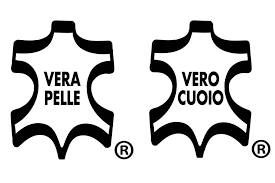
PELLE: la pelle è:
1. La parte esterna di frutti o verdure, la buccia, come la pelle
vellutata della pesca.
2. L’epiderme del corpo umano specialmente con riguardo al
colore: abbronzata, olivastra, ecc.
3. Il rivestimento esterno degli animali.
4. La parte esterna di animali conciata e adibita a vari usi: borse,
cinture, rilegature di libri, ecc.
Varie locuzioni:
1. “Non stare nella pelle” significa non riuscire a contene la
propria rabbia, impazienza, gioia, ecc.
2. “Avere la pelle dura” significa avere capacità di resistenza,
3. “Rischiare la pelle” è rischiare la vita.
4. “Lasciarci o rimetterci la pelle” significa morire.
5. “Fare la pelle” significa uccidere qualcuno.
6. “Amici per la pelle”, per sempre.
7. “A fior di pelle”, in superficie, mentre avere i nervi a fior di
pelle significa essere nervosissimo.
8. “Sentirsi accapponare la pelle” significa emozionarsi molto.
9. “Vendere cara la pelle” significa difendersi fino all’ultimo.
How do you say “the peel” in Italian? Part 2
PELLE:
1. The outer skin of fruit or vegetables, the velvety skin of the
peach;
2. Human skin, mostly related to coloring: tanned, olive, etc.
3. The skin of animals
;
4. The tanned part of animal hides used for purses, belts, binding books,
etc.
Locutions:
1. “Not be in your skin”, means to be unable to contain one’s
anger, impatience, joy, etc.
2. “Have tough skin”, means to be able to resist.
3. “Risk one’s skin”, one’s life.
4. “Leave or lose one’s skin” means to die.
5. “Do/make the skin”, means to kill someone.
6. “Friends of the skin”, forever, the equivalent of blood
brothers.
7. “The touch of skin”, on the surfice, while having your nervs at
the touch of skin means to be very nervous.
8. “To feel like your skin is gooseflesh”, means to be very
emotional, moved.
9. “Sell your skin dear” means to defend yourself to the bitter
end.
[Please understand that the translations from Italian into
English are literal.]
Saturday, January 19, 2019
|
|
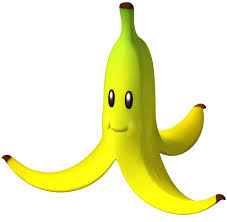 Come si dice “the peel” in italiano? Parte 1 Come si dice “the peel” in italiano? Parte 1
BUCCIA: la buccia è:
1. La parte esterna di frutti, tuberi e legumi: la buccia di mela,
dei fagioli delle patate;
2. La corteccia ancora fresca di piante;
3. Rivestimento di formaggi e insaccati: del salame, del
parmigiano.
Varie locuzioni:
1. Scivolare su una buccia di banana significa cadere facilmente
in una situazione evitabile.
2. Rivedere la buccia a qualcuno significa esaminare
severamente il lavoro di un altro.
3. Avere la buccia dura significa essere forte e resistente sia
fisicamente che psicologicamente.
4. Lasciare la buccia in qualcosa significa abbandonarsi
completamente.
SCORZA: la scorza è:
1. La corteccia, la parte esterna di piante legnose: dell’olivo, dell’
acero;
2. La parte esterna di alcuni frutti: del limone, delle arance;
3. La pelle di alcuni animali specialmente i rettili;
4. La pelle umana, specialmente nelle locuzioni; per esempio:
Massimo ha la scorza dura, non si arrende mai.
How do you say “the peel” in Italian? Part 1
BUCCIA:
1. The external part of fruit, tubers and legumes: the skin of an
apple, of beans, of potatoes;
2. The still fresh bark around plants;
3. The rind around cheeses and cured meats: salami, parmigiano.
Locutions:
1. Slip on a banana peel means to easily fall into an otherwise
avoidable situation.
2. Review someone’s “buccia” means to criticize their work.
3. Have a hard outer peel/skin/shell.
4. Leave the peel in something means to abandon oneself
completely.
SCORZA:
1. The bark of a plant, like an olive or a maple tree;
2. The peel of certain fruit: lemon, orange;
3. The skin of certain animals, especially reptiles;
Human skin, for the most part in expressions like having a tough
hide.
Saturday, January 12, 2019
|
|
LE ORIGINI DEL PANETTONE: PARTE II, LA STORIA
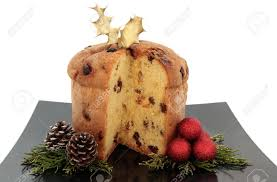
Ho trovato quest’articolo che parla dell’origine del Panettone,
il più famoso dolce di Natale in Italia. Siccome delle quattro
storie, due sono favole divertenti, e due sono storiche, le ho
divise in tue parti. Il sito da cui ho tratto questo articolo è
https://www.fanpage.it/il-panettone-le-origini-del-famoso-
dolce-natalizio-fra-tradizione-e-leggenda/; grazie mille a
Federica D'Alfonso per averlo scritto; la traduzione in inglese è
la mia.
Un’arte antichissima: In realtà la ricetta del panettone
risalirebbe addirittura al Medioevo: alcuni manoscritti del
Quattrocento raccontano l’usanza, diffusa sotto gli Sforza, di
celebrare il Natale concedendo a tutti di mangiare, almeno per
un giorno, un pane più ricco e dolce di quello degli altri giorni.
Ai fornai dell’epoca era infatti vietato di utilizzare farine
pregiate per impastare il pane per il popolo, ma il giorno di
Natale a tutti era permesso di deliziarsi con un impasto di
farina, burro e uova: una fetta di questo straordinario dolce
veniva conservata per l’anno successivo, in segno di augurio e
speranza di abbondanza.
La tradizione che vuole che il panettone sia nato a Pavia
anziché a Milano trova oltretutto testimonianza in alcuni
registri provenienti dal Collegio Borromeo: in un foglio del 1599
gli storici hanno rinvenuto delle annotazioni relative alle spese
per il pranzo di Natale, fra cui compare questo particolare tipo
di “pane”: si legge che per realizzare l’antenato del moderno
panettone furono necessarie tre libbre di burro, due di uvetta
e due once di spezie, ottenendo “13 pani grossi per dar alli
scolari il giorno di Natale”.
THE ORIGINS OF PANETTONE: PART II, THE HISTORY
I found this article which talks about the origin of Panettone,
the most famous Italian Christmas sweet. Since of the four
stories, two are amusing fairy tales, and two are historic, I
have divided them into two parts. The website where I found
this article ishttps://www.fanpage.it/il-panettone-le-origini-
del-famoso-dolce-natalizio-fra-tradizione-e-leggenda/; thank
you very much Federica D'Alfonso for having written it; the
translation is mine.
An ancient art: In reality the recipe for panettone dates as far
back at the Middle Ages: several manuscripts from the 1400’s
tell of the custom established under the Sforza Family, to
celebrate Christmas allowing everyone to eat, at least one
day, bread which was richer and sweeter than that of the
other days. The bakers of the time were prohibited to use
prized flour to make bread for the common folk, but on
Christmas day everyone was permitted to enjoy a mixture of
flour, butter and eggs: a slice of this extraordinary sweet was
put aside for the following year, as a symbol of good luck and
a hope for abundance.
The tradition that states the panettone was born in Pavia
instead of Milan finds proof above all in several records found
in the Collegio Borromeo: on a folio from 1599, historians
found annotations regarding the expenses for the Christmas
dinner, among which to buy this particular kind of “bread” we
read: that in order to make the ancestor of the
modernpanettone the following were necessary: three
pounds of butter, two pounds of raisins and two ounces of
spices, resulting in “13 large loaves to be given to the disciples
on Christmas day.”
Saturday, January 5, 2019
|
|
Una delle tradizioni di capodanno più diffuse in Italia è di
mangiare lenticchie;date la loro forma rotonda e piatta simile
ai soldi e il loro valore nutritivo, mangiare le lenticchie è un
auspicio per un anno ricco, abbondante. Spesso sono
consumate con il cotechino o lo zampone, anch’essi simboli di
prosperità.
Questa tradizione ha origine nell’antica Roma quando era
usanza regalare una “scarsella” (una tipica borsa di cuoio, che
di solito conteneva monete, era legata alla cintura) piena di
lenticchie, con l’augurio che si trasformassero in monete. Il
nome lenticchia, infatti, deriva dalla particolare forma a lente
di questi legumi, che ricorda quella di una moneta. Prima di
tutto, la forma rotonda e appiattita di questo legume, ricorda
le monete d'oro, inoltre anche la cottura, che ne fa aumentare
il volume, fa pensare a un accrescimento, quindi ad una
ricchezza crescente.

Happy 2019
One of the most common New Year’s traditions in Italy is to
eat lentils; given their round and flat shape, similar to money,
and their nutritive value, eating lentils is a wish for a rich and
abundant year. Often they are consumed with cotechino
(type of large pork sausage) or zampone (stuffed pig’s foot),
other symbols of prosperity.
This tradition has its origins in ancient Rome when it was a
common occurrence to give a “scarsarella” (a typical bag
made out of leather which usually contained coins and was
tied to a belt) full of lentils, with the wish that they would
transform themselves into coins, The name lentil, in fact
derives from the lens shape of this legume, similar to a coin.
Firstly, its round and flat shape, evokes a gold coin, and
secondly, when it is cooked its volume increases making one
think of increased wealth.
Saturday, December 29, 2018
|
|
Blog Pages/Years
2025 | 2024 | 2023 | 2022 | 2021 | 2020 | 2019 | 2018 | 2017 | 2016 | 2015 | 2014 |
|
|
|
